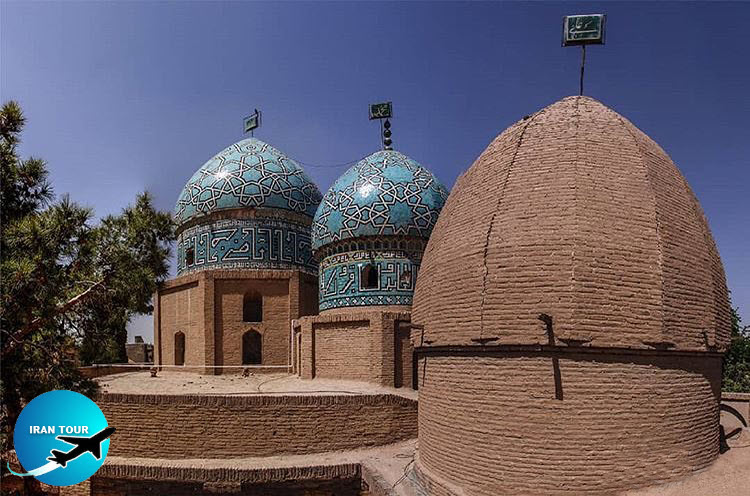Copyright 2020 - 2021 irantour.tours all right reserved
Designed by Behsazanhost
Moshtaqieh tomb or Moshtagh Ali shah shrine
Moshtaqieh tomb or Moshtagh Ali shah shrine
Moshtaqieh tomb or Moshtagh Ali shah shrine is known as Segonbadan which means having three domes. it is one of the holy historical buildings of the Qajar era for Sufist followers. This historical mosque and tomb is located in Shohada sq at the end of Ganjali Khan Bazaar of Kerman, but in the past, it was outside the city and near an ancient cemetery. Initially, this tomb was built as the burial place of Mirza HosseinKhan Rayeni, governor of Kerman at the end of the Zandieh era, but it was named Moshtaqieh because Moshtaq AliShah was buried there later.
 |
At the end of Kerman Bazaar and in the corner of the Shohada sq, there is a valuable historical monument with 3 domes. It is famous to the Moshtaghie dome or three Gonbad. This historical Qajar period(1789-1925) shrine is the cemetry of 3 famous Iranian Sufis. Moshtaqieh Dome also known as the Three Domes Monument, dates back to the Qajar era (1785-1925). The three domes are built over the tombs of Moshtaq Alishah, Sheikh Esmail, and Kowsar Alishah.
Mushtaq Alishah was a musician, poet, and mystic who was killed in 1791 for reciting the Quran to the sound of Setar (a musical instrument with four strings ). A dome was built over his tomb in 1844. Moshtaqieh has elaborate tilework and wall paintings as well as Moqarnas and stucco decorations. This monument comprises three domes that contain tombs of Moshtaq Alishah, Sheikh Esmaeil, and Kowsar Alishah who were among major Sufis.
Mirza Mohammad Torbati known as Mushtaq Ali Shah was one of the mystics of the 13th century that was born in Isfahan. His early interest in music made him very successful in this field, he was one of the best Sitar players of his own age (Sitar is a traditional Iranian instrument, there are many instruments that look like the Sitar found in east Asia but nowadays the only instrument with the descriptions of Sitar is the Iranian piece), this instrument that was also known as having three chords was added a fourth cord by Mushtaq AliShah nearly two and a half centuries ago. The fourth chord of Sitar which is known as the Mushtaq chord is of the innovations of Mirza Mohammad Torbati. Mirza Mohammad got to know about mysticism when he was young and met some mystics that changed the path of his life.
The opponents of mysticism that feared Moshtaq ALiShah`s popularity, started a conspiracy against him and started the rumor that he reads the Quran with the music of Sitar and disrespects the holiness of the Quran. Eventually, in the year 1206 when Mushtaq was going to the mosque to pray, killed by the order of one of the religious leaders.
Moshtaqieh's tomb is one of the favorite historical sites among tourists.
- Details
- Category: Kerman HISTORICAL SITES